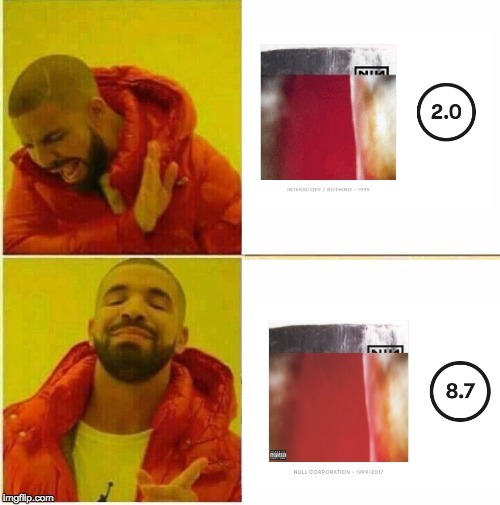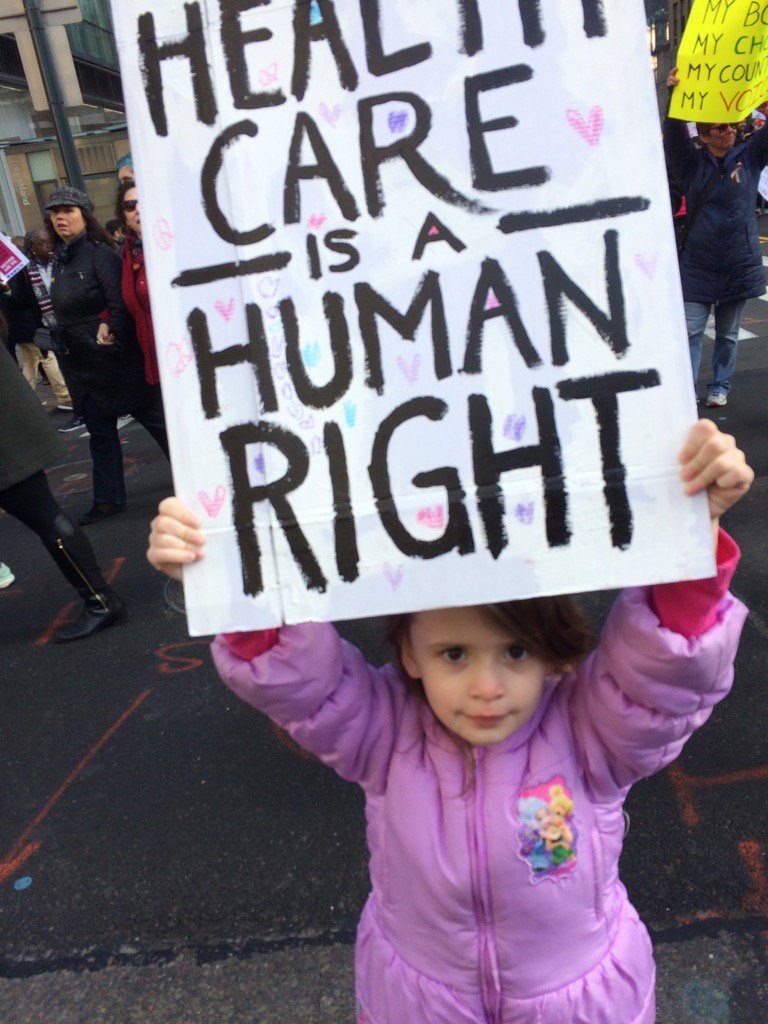There is no artist behind Slender Man, not in the panoptic, memetic form in which Morgan and Anissa encountered him. Slender Man’s “author” is the internet and the army of artists and writers and filmmakers and game designers who inhabit it. Only the accident of history, in which the original posts can be tracked down, enables us to put names to the faceless being at all. A few decades ago Slender Man would just be Bloody Mary or the killer with a hook for a hand who disrupts teenagers necking in their cars. A few centuries ago and he’d be the vampire a town feared enough to dig up graves and behead the corpses inside, or the witch who lures wayward children to their doom. With no artist in play, it becomes clear how fallacious it is to pin the blame on artists for the actions of disturbed individuals who consumed their art at all.
This is not to say art never affects society or inspires terrible things. When Jared Kushner crows about targeting ads for his odious father-in-law Donald Trump’s presidential campaign to viewers of The Walking Dead because of their concerns about immigration, he’s recognizing the fascist ideology that underlies both the show and the current administration. But art with an ideological vector connects the reader or viewer to a cohesive worldview, which, right or wrong, helps explain society and prescribe remedies for its ills. Action and reaction are to be expected.
That’s different from a movie about a pair of abused kids who become mass murderers and media superstars, or music by a glam-influenced Satanist, or creepy internet posts about a demon with no face. These merely provide monsters who embody fears and desires, not a political program. Those monsters will always exist in one form or another, and disturbed kids like Morgan and Anissa will always find them and use them as the mold into which they pour their crumbling sanity or mounting bloodlust. In blaming the art or the artist, we commit the exact same error, looking for a boogeyman to help us explain the inexplicable. We’re finding our own Slender Man to serve.
Artcrime: What “Beware the Slenderman” Says About Blaming Artists for Violence
“The Young Pope” thoughts, Season One, Episode Four
It’s not TV. It’s The Young Pope.
We hope HBO will pardon our repurposing of their famous catchphrase for the sake of celebrating what creator Paolo Sorrentino, star Jude Law and everyone else involved in this extraordinary pulp-prestige TV project have wrought. But hey, if the slogan fits, wear it. Flip the channels or scroll through the streaming services all you want, but you won’t find anything like this. Its combination of tightly controlled tone with beautifully bizarre flights of fancy and absolutely colossal camp stands alone. It’s Hannibal for lapsed Catholics.
I reviewed last night’s episode of The Young Pope for Rolling Stone. It was excellent as always. But let me tell you this: Nothing can prepare you for next Sunday’s episode. I literally wept tears of joy.
“The Young Pope” thoughts, Season One, Episode Three
Next up is the opening credit sequence that launched a thousand fan tumblrs. As an instrumental version of “All Along the Watchtower” plays, Pius walks in slow motion past a series of famous religious paintings as a comet soars through the sky in each of them, tracing his progress. (This is a symbol dating back to one of the Medici popes, Clement VII, and is said to indicate either great good or great misfortune.) With a shit-eating grin on his face and the credits emblazoned in flickering neon blue on the wall behind him, he eventually turns directly to the viewer … and winks. Nothing is sacred here, not even the fourth wall. At the end of his stroll, he passes a life-sized statue of beloved Pope John Paul II, which is then promptly bowled over by the now-extinguished comet. (This is itself a sculpture called “La Nona Ora (The Night Hour)” by artist Maurizio Cattelan.) Eat meteor, JPII!
I reviewed tonight’s marvelous episode of The Young Pope for Rolling Stone.
The 25 Most Anticipated TV Shows of 2017
TWIN PEAKS
Showtime, May 21
“I’ll see you again in 25 years”: Ok, so the ghost of Laura Palmer may have wound up being off by a year or so when she uttered these immortal words to Agent Dale Cooper. But hey, better late than never. As it stands, the return of David Lynch and Mark Frosts’s seminal small-town–noir series – arguably the most influential show for TV’s New Golden Age – will pick up with much of the original cast, including Kyle MacLachlan as Coop and Sherilyn Fenn as Audrey Horne, in tow; everyone from Laura Dern to Trent Reznor and Eddie Vedder are slated for cameos. The original Peaks was both heartbreakingly empathetic and pants-pissingly scary; there’s no reason to expect the Lynch-directed Season Three won’t follow suit. STC
“Taboo” thoughts, Episode Two
All due respect to the East India Company, but James Keziah Delaney has a new nemesis in town, and his name is Pius XIII. That’s right: We’re all stars in the Pope Show, and that’s the stage upon which Taboo co-creators Steven Wright and Tom Hardy now find themselves forced to perform. The Young Pope is undoubtedly a love-it-or-leave-it proposition, but it’s also a marvel of artifice and audacity that makes Taboo look positively tame, no matter how many tribal tattoos fit on Hardy’s nude body.
Of course, this second episode of Taboo has more going against it than stiff competition. For all the care put into constructing a convincingly squalid 19th-century London, Knight’s script too often feels like a first draft. For example: “Am I the only one in this company with a brain?” asks malevolent Sir Stuart Strange, after his East India underlings fail to grasp the nuances of his latest monologue. It’s the kind of line that could have been turned into something clever, and thus illustrated the character’s point, if it were given 30 extra seconds of thought.
“The Young Pope” thoughts, Season One, Episode Two
That’s the beauty of The Young Pope: Like all truly great television shows, it trusts its audience enough to risk alienating us. What will people make of this episode’s most bizarre scene, in which Pius supernaturally soothes a savage … kangaroo? It’s so truly, madly, deeply odd, and showrunner Paolo Sorrentino has no interest in softening the blow. You make your peace with an exquisitely campy series about a chain-smoking homophobic tyrant who looks to the band behind “Get Lucky” and “One More Time” for stylistic inspiration; who was raised by a nun who thinks he’s a saint but wears a t-shirt reading “I’m a Virgin, but This Is an Old Shirt” to bed; and who can calm rogue Australian wildlife like, as Voiello puts it in his thick Italian accent, “Saint Francis of-a Sydney.” Or you don’t. If the meme-able moments make it all sound silly, well, remember when an O.J. Simpson show from the creator of Glee starring John Travolta, David Schwimmer, and Cuba Gooding Jr. sounded silly, too? We rest our case.
“The Affair” thoughts, Season Three, Episode Eight
Hey, remember when The Affair wasn’t The Noah Solloway Show? Believe it or not, there was such a time not so long ago. Noah’s story — his stint in prison, his torment at the hands of sadistic guard John Gunther, his post-release trysts with Alison and Helen and (sorta) his new romantic interest Irène, his attempted murder, his infection and addiction, his hallucinations, his secret origin as his mother’s euthanasia provider — have come to dominate the show so totally that I’d all but forgotten what it was like to truly see things through other eyes. Not just his own, I mean, but those people who have something other than Noah Solloway on their minds.
This week, that’s what we got. If episode seven was a return to The Affair’s old format — two tightly overlapping points of view on the same events — episode eight is a return to The Affair’s old setting, both physically and psychologically. Taking place almost entirely in Montauk, as beautifully shot as ever, this Alison/Cole installment focuses squarely on the issues that drove their stories since the show’s inception: grief, loss, infidelity, and the sense of being connected by something deeper than love — tragedy.
“I think people see what they want to see in other people:” I reviewed last night’s episode of The Affair for Decider.
“The Young Pope” thoughts, Season One, Episode One
“We have forgotten to masturbate!”
So proclaims Pope Pius XIII to the adoring throngs gathered in St. Peter’s Square to hear the first homily of his papacy. Yet when it comes to the jaw-dropping moments in the premiere episode of The Young Pope, the Holy Father’s ode to onanism barely even makes the Top 10.
Italian writer-director Paolo Sorrentino kicks off his highly anticipated series with the surreal dream-image of the new pope emerging from a literal mountain of dead and dying babies. He follows it up with not one but two shots of the pontiff’s bare ass before we’re five minutes in. The smug religious leader then slo-mo struts through a teeming crowd of priests, nuns and cardinals whose multi-colored garb looks might like something out of Game of Thrones‘ – if they weren’t, you know, what Catholic clergy really wear. He has a split-second flashback to seeing a topless woman in his youth. He looks up and hey, there’s a water cooler lit like it’s a visitor from God. His adoring underlings form stunning tableaux in shot after shot, like something out of R.E.M.’s “Losing My Religion” video. He glides to the balcony to give his speech as if attached to the camera, like Harvey Keitel when he gets loaded in Mean Streets. A graphic overlay of black bars slowly spread across the screen, emblazoned with the series’ title. His lunatic grin is the only thing that’s visible.
Pius XIII takes the proverbial stage to the screams of thousands, arms outstretched like a rock star, grinning and gesticulating like his name was Monsignor Mussolini. Rain clouds are parted with a wave of his hands, and out comes the sun. Then, with a gorgeously old-fashioned zoom-in and drum buildup, he drops that masturbation line, the first explosion in a carpet-bombing campaign of unorthodoxy: Why not have extramarital sex, gay marriage, nuns saying mass? In reaction, shocked prelates collapse backwards in unison like they’re in the final panel of a gag cartoon. Panicked priests run through the Vatican halls, screaming for help. Only the intervention of his second-in-command, summarily firing him from the papacy, tips the show’s hand that this was just a dream.
But when this young Pope, a 47-year-old American named Lenny Belardo and played by Jude Law, wakes up from his nightmare, it doesn’t feel like a cop-out. On the contrary, the twist works like a charm, because everything here – from the writing to the cinematography, the score to the performances – is honest-to-God dreamy. The show does the same thing its title character is supposed to do as the leader of the Catholic Church: It provides a breath of madcap fresh air in a dreary, homogeneous TV season.
“The Affair” thoughts, Season Three, Episode Seven
On this week’s episode of The Affair, disaster struck. It’s just not clear who, or how hard, it hit.
I reviewed last weekend’s unusual and pivotal episode of The Affair for Decider.
Nine Inch Nails: ‘The Fragile (2017 Definitive Edition)’ / ‘The Fragile: Deviations 1’
The Fragile arrived a stylistic turning point, emerging at the point where the “alternative” sobriquet fell out of fashion and “indie” achieved dominance. Today, though, reservations about the lyrics’ outré confessionality and the music’s jam-packed, everything-plus-the-kitchen-sink gigantism seem positively quaint. (Don’t care for titanically hyper-produced albums stuffed with uncomfortably intimate and self-mythologizing lyrics about your emotional world falling apart? Tell it to Lemonade.) The Fragile may lack the tightness of Nine Inch Nails’ other highlights: the concise fury of Broken, the inexorable depressive logic of The Downward Spiral, the late-career professionalism of Hesitation Marks. But it takes the emotional distress that gives it its title and transmutes it into something colossal, defiant, and resilient. Listen to it at your strongest or your weakest (and I’ve certainly done both) and it will offer you a sonic signature commensurate with the power of what you feel inside.
tl;dr version:

“Taboo” thoughts, Episode One
As of this premiere, Tom Hardy himself is the best thing about Taboo. He’d better be, since he’s pretty much the only thing about Taboo. Everyone and everything else on the show simply reacts to his menacing presence.
What a presence it is, though. Your mileage may vary regarding Hardy’s mumble-mouthed machismo, but I find the way he carries himself a delight to watch. As Delaney, Hardy saunters across the screen like he’s en route to an ass-kicking contest that starts in ten minutes and it’s a leisurely five-minute walk away. Call it “brute casual,” a trait that he’s got it in spades, and Taboo allows him to dole it out by the shovelful.
[…]
Taboo suffers from the dull, expensive look that’s endemic to prestige TV generally and its period-piece iteration specifically. Director Kristoffer Nyholm, late of the original Danish version of The Killing, captures a few magical moments on the muddy, sun-streaked London riverbank, but beyond that, you could swap entire sets and shots with Penny Dreadful or The Knick or Peaky Blinders and only students of historical fashion would be the wiser. Moreover, the show shares its rich yet sickly “realistic” lighting and color palette with everything from The Night Of to any scene involving gangsters on Marvel’s Netflix shows; you get the sense it looks this way simply because this is how TV shows look now. (I’m no fan of The OA, but how refreshing was it to watch a drama that was brightly lit?) There’s nothing here you haven’t seen before.
Hey look, it’s my first review for Vulture! I’m talkin’ Tom Hardy and the series premiere of Taboo, which I’ll be covering for Vulture all season. (I’m exceedingly proud of that “Hardy saunters across the screen like he’s en route to an ass-kicking contest that starts in ten minutes and it’s a leisurely five-minute walk away” bit.)
The Boiled Leather Audio Moment #1!
Moment 01 | The Fate of the Direwolves
I’m pleased to announce that the first installment of the Boiled Leather Audio Moment, our subscriber-exclusive new podcast, is now up! Each BLAM will be a mini-episode in which Stefan and I focus (for now anyway) on your questions about A Song of Ice and Fire. Our inaugural installment answers a question posed by subscriber and longtime friend of the podcast Leslie Jividen: What will be the fate of the surviving Stark/Snow direwolves, from Ghost on down? If you’re already a patron, click here to hear us give it the ol’ greenseer try, and please accept our very sincere thanks for your patronage! If not, go to patreon.com/boiledleatheraudiohour and subscribe at the low low limited-time level of $1/month for access to all our ASoIaF wisdom!
2017 Golden Globes: The Official Drinking Game
Better late than never, I guess? Here’s a link to the drinking game I helped write for Rolling Stone to make the Golden Globes more tolerable. I think you’d have gotten pretty loaded.
STC on the Radio Revisited
Listen to me talk about the Golden Globes on On The Town with Michael Riedel this morning! My segment starts around the 44-minute mark.
STC on the Radio
I’ll be talking about the Golden Globes with theater critic Michael Riedel on his On the Town radio show tomorrow morning at 9am on 970AM in the New York area. The show will be posted here shortly thereafter. Enjoy!
A quick word about ‘Undertale’
After many months of my two kids (5 and 7) talking endlessly about the Undertale play-throughs they’d been watching on YouTube (this is a huge, huge thing for little kids, apparently), we finally got the game and started playing it together. The biggest source of frustration for me, and by extension for them, is how the basic gameplay mechanics involve what amounts to trickery on the part of the game. Everyone knows that the goal is to get through the game while killing as few monsters as possible. If the game made that simply difficult to figure out, fine. But what it does is present you with characters, your early ally Toriel being the best example, who are impossible not to kill unless you literally ignore all evidence the game provides to the contrary and keep doing the same seemingly ineffective shit over and over until, magically, it becomes effective. A game in which combat is an option but is to be avoided at all costs is a thoughtful evolutionary step for this genre; duping you into thinking it’s unavoidable unless you read the internet and find out you’re just supposed to ignore your lying eyes makes it much less so.
They Lie About ‘They Live’: John Carpenter and the Neo-Nazi Quagmire
My heart goes out to John Carpenter, a thoughtful, talented, humane artist whose contributions to our culture dwarf those of every single one of these wannabe Goebbelses combined. I can’t imagine how infuriating it must be to see your art—let alone a work of outright anti-capitalist agitprop like They Live—twisted into its ideological opposite by bigots and charlatans. I’d almost certainly have spoken out, too.
But I’m not convinced it will do any good. I’m not convinced it won’t outright hurt, in fact. Like Hillary Clinton’s “alt-right” speech during the campaign, this has now elevated the neo-Nazi smears and lies into the realm of debatable topics, the stuff of “meet the dashing new face of the extreme right” puff pieces.
“They Live is about International Jewry” is something that had never occurred to non-piece-of-shit people before this week. Now it’s a sick, sad footnote in the film’s history, a slug in its Wikipedia entry, a scratch on the lens of the sunglasses that help us see reality for what it is. That’s the goal of the racists and fascists, after all: Distort our vision until everything is as ugly as they are.
2017 Golden Globes: What Will Win, What Should Win
Best TV Series (Drama)
The Crown
Game of Thrones
Stranger Things
This Is Us
WestworldWILL WIN: The Globes’ TV patterns are difficult to predict, but it’s rare to award a series with its first trophy deep into its run. So while it’s possible that Game of Thrones‘ historic “Battle of the Bastards” season could snag an outlier win, our money is on the HFPA giving the nod to rookie (and network) domestic drama This Is Us.
SHOULD WIN: With enough Emmy gold under its belt to ransom the Iron Throne itself, and deservedly so, Game of Thrones‘ epic recent run easily defeats the competition.
ROBBED: Where do we begin? The Affair, The Americans, Better Call Saul, Empire, Halt and Catch Fire, Horace and Pete, House of Cards, Mr. Robot, Narcos – all of these past nominees or worthy applicants got the cold shoulder. Of the group, Mr. Robot arguably had the boldest and best season.
Over at Rolling Stone I predicted the winners, losers, shoulda-beens, also-rans, and snubs of this year’s Golden Globes. As is always the case when I do prediction pieces, I am right and I will be proved right. Don’t @ me.



